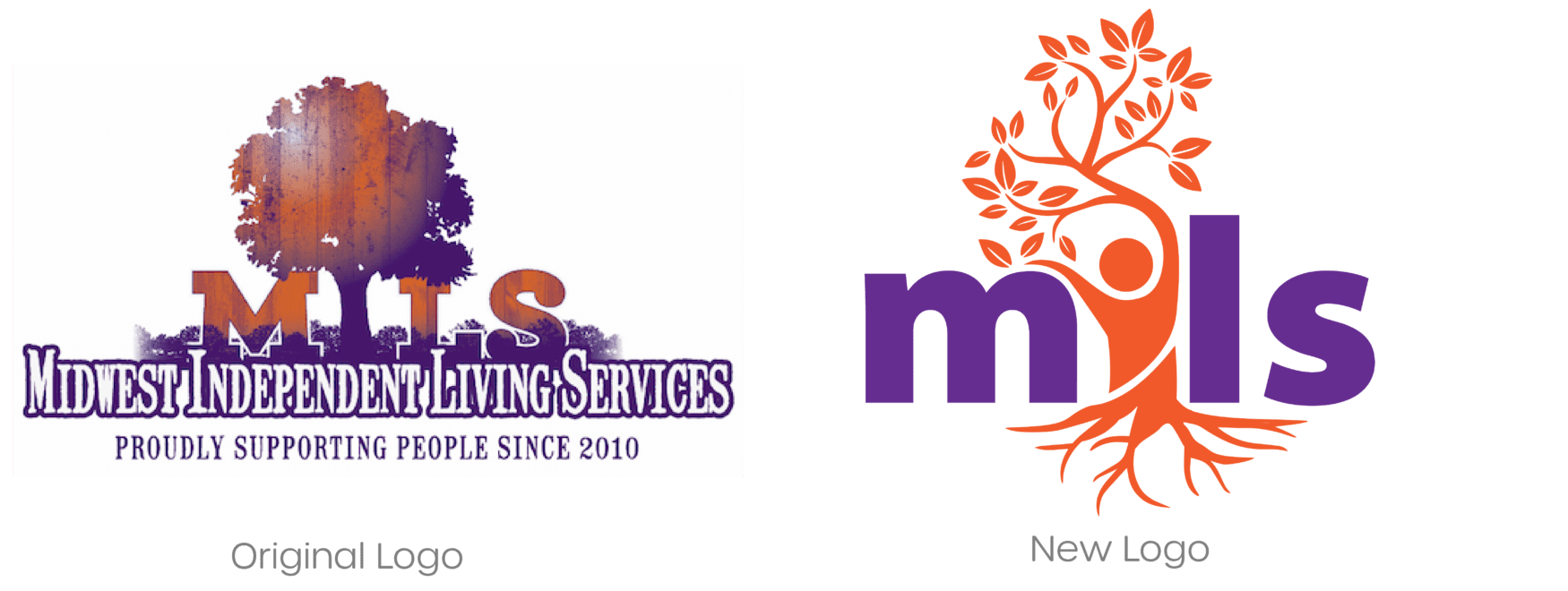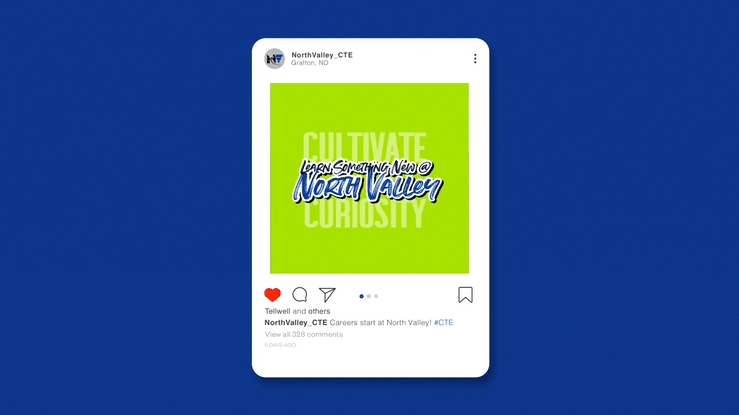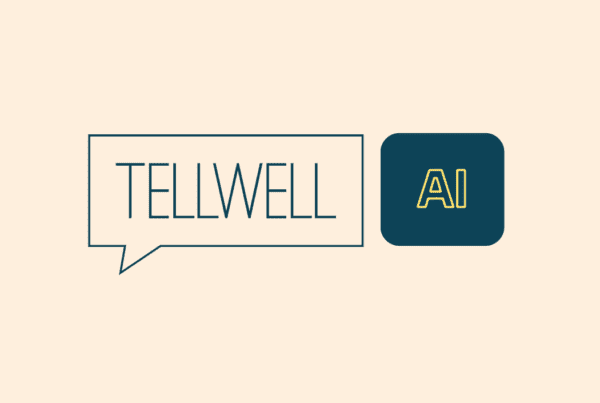TL:DR
Non-profit branding is about creating a consistent narrative that communicates your mission, builds trust, increases visibility, engages supporters, and drives donations. Unlike for-profit branding, it focuses on social impact rather than sales.
Key Components:
- Mission, Vision, Values: Define your purpose, aspirations, and guiding principles
- Brand Personality: Establish a consistent voice and tone
- Visual Identity: Create recognizable logos, colors, and typography
Strategy Development:
- Research your audience and competitors
- Craft a unique value proposition
- Tell compelling stories that showcase your impact
- Implement your brand consistently across all platforms (website, social media, print)
- Engage your audience through personalization and emotional appeal
- Measure success with metrics and adapt based on feedback
Best Practices:
- Stay true to your mission
- Maintain consistency
- Use high-quality visuals
- Gather and incorporate audience feedback
- Leverage digital tools and community engagement
Now, if this is interesting, get into the rest of the resource!
Introduction
Branding is a crucial element for any organization, but for non-profits, it holds even more significance. A strong brand helps non-profits communicate their mission, attract donors, engage volunteers, and build trust within the community. In the competitive landscape of non-profit work, effective branding can be the differentiator that sets an organization apart and propels its mission forward.
This guide will delve into the essentials of non-profit branding, providing comprehensive insights and actionable steps to help your organization build and sustain a powerful brand. We’ll cover everything from understanding the core components of a non-profit brand to implementing strategies that resonate with your audience.
Importance of Branding for Non-Profits
Branding is not just about a logo or a catchy tagline; it’s about creating a consistent and compelling narrative that resonates with your audience. For non-profits, branding can:
- Communicate Purpose: Clearly convey your mission and values to your audience.
- Build Trust: Establish credibility and reliability, encouraging donations and volunteer support.
- Increase Visibility: Stand out in a crowded market, making it easier for people to find and support you.
- Engage and Retain Supporters: Foster a sense of community and loyalty among your supporters.
- Drive Donations: Effective branding can inspire more generous and consistent donations.
Overview of What the Guide Will Cover
This guide will provide a step-by-step approach to non-profit branding, covering the following topics:
- Understanding Non-Profit Branding: We’ll define what non-profit branding is and explore its significance, as well as the key differences between non-profit and for-profit branding.
- Core Components of a Non-Profit Brand: Detailed discussion on mission, vision, values, brand personality, and visual identity.
- Developing Your Brand Strategy: Techniques for research, audience analysis, and crafting a unique value proposition.
- Creating a Consistent Brand Narrative: Storytelling techniques and examples from successful non-profits.
- Visual Identity and Design Elements: Best practices for logos, color schemes, and typography.
- Building Your Brand Guide: How to create comprehensive brand guidelines.
- Implementing Your Brand Across All Platforms: Strategies for digital presence, social media, and print materials.
- Engaging Your Audience: Personalization, emotional appeal, and community building.
- Measuring Brand Success: Metrics, tools, and strategies for monitoring and improving your brand.
- Best Practices and Common Pitfalls: Dos and don’ts, lessons from common mistakes, and expert tips.
- Leveraging Storytelling for Non-Profit Success: Importance of storytelling and techniques for crafting compelling stories.
- Integrating Community Engagement: Building relationships and organizing community events.
- Utilizing Digital Tools and Platforms: Overview of digital tools and successful digital campaigns.
- Creating a Feedback Loop: Methods for gathering and using feedback to refine your brand.
- Tellwell’s Approach to Non-Profit Branding: Insights into Tellwell’s branding philosophy and examples of successful projects.
1. Understanding Non-Profit Branding
Definition and Significance
Non-profit branding encompasses all the ways an organization communicates its mission, values, and impact to its audience. It involves creating a unique identity that resonates emotionally with supporters and stakeholders, differentiating the organization from others in the sector. Effective branding helps build trust, increase engagement, and drive support, which are essential for achieving long-term sustainability and impact.
Differences Between For-Profit and Non-Profit Branding
While both for-profit and non-profit organizations benefit from strong branding, their objectives and strategies differ. For-profit branding typically focuses on driving sales and maximizing profits, emphasizing product benefits and competitive advantages. Non-profit branding, on the other hand, centers around the mission and impact, aiming to inspire support and drive social change. Non-profit brands need to evoke empathy, build trust, and foster a sense of community among supporters, volunteers, and donors.
By understanding these nuances and applying the principles outlined in this guide, non-profits can create a compelling brand that effectively communicates their mission, engages their audience, and drives lasting impact.
2. Core Components of a Non-Profit Brand
Mission, Vision, and Values
At the heart of any non-profit brand are its mission, vision, and values. These elements define the organization’s purpose, aspirations, and guiding principles.
- Mission: This is a clear and concise statement that communicates the organization’s primary goal and the impact it aims to achieve. It should be specific, actionable, and inspirational, providing a rallying point for supporters and stakeholders.
- Vision: This outlines the long-term impact the organization aspires to make. It paints a picture of the future the non-profit seeks to create, serving as a motivational guide for strategic planning and decision-making.
- Values: These are the core principles and beliefs that guide the organization’s actions and behaviors. They help establish a strong ethical foundation and build trust with supporters, ensuring consistency in messaging and actions.
Brand Personality and Tone
The brand personality and tone reflect the organization’s character and how it communicates with its audience. This involves defining the organization’s voice—whether it’s formal or casual, serious or playful—and ensuring that this tone is consistent across all communications.
- Personality: This encompasses the human traits attributed to the brand, making it relatable and memorable. For non-profits, a compelling brand personality can foster deeper connections with supporters and differentiate the organization from others.
- Tone: This refers to the style and attitude of the communication. It should align with the brand personality and be adapted to different contexts while maintaining a coherent overall voice.
Visual Identity (Logo, Color Palette, Typography)
Visual identity is crucial for creating a recognizable and cohesive brand image. It includes several key elements:
- Logo: The logo is a visual representation of the brand, often the most immediate identifier. It should be simple, versatile, and reflective of the organization’s mission and values.
- Color Palette: Colors evoke emotions and can significantly impact brand perception. A carefully selected color palette ensures visual coherence and helps convey the brand’s personality and tone.
- Typography: Fonts contribute to the brand’s visual identity and readability. Consistent use of typefaces helps maintain a professional and cohesive look across all materials.
3. Developing Your Brand Strategy
Research and Audience Analysis
Understanding your audience is fundamental to developing a successful brand strategy. This involves:
- Research: Conduct thorough research to gather insights into your target audience’s demographics, preferences, behaviors, and motivations. Use surveys, interviews, and data analytics to build a detailed audience profile.
- Audience Analysis: Identify the needs and desires of your audience. Understand what drives their engagement and support, and tailor your brand messaging to resonate with these motivations.
Competitive Analysis
Analyzing your competition provides valuable insights into the market landscape and helps identify opportunities for differentiation.
- Identify Competitors: List organizations that operate in the same space and serve similar audiences. Study their branding, messaging, and engagement strategies.
- SWOT Analysis: Perform a SWOT analysis (Strengths, Weaknesses, Opportunities, Threats) for both your organization and your competitors. This helps pinpoint areas where you can stand out and avoid pitfalls.
Crafting a Unique Value Proposition
A unique value proposition (UVP) articulates the distinctive benefits your organization offers, setting you apart from competitors.
- Define Your UVP: Clearly state what makes your non-profit unique. Focus on the specific impact you create and how you deliver value to your supporters and beneficiaries.
- Communicate Your UVP: Ensure that your UVP is prominently featured in all communications. It should be a central theme in your messaging, driving home why supporters should choose to engage with your organization over others.
By thoroughly understanding and implementing these core components and strategic steps, your non-profit can build a compelling brand that resonates deeply with your audience, drives engagement, and supports your mission.
4. Creating a Consistent Brand Narrative
Storytelling Techniques
Storytelling is a powerful tool for non-profits to communicate their mission and impact. Effective storytelling techniques include:
- Emotional Appeal: Tap into emotions to create a deeper connection with the audience. Share personal stories and testimonials that highlight the human aspect of your work.
- Authenticity: Be genuine and transparent in your stories. Authenticity builds trust and credibility.
- Structure: Use a clear beginning, middle, and end. Present a problem, show the solution your organization provides, and highlight the positive outcomes.
- Visuals: Incorporate compelling visuals like photos and videos to enhance your narrative and make it more engaging.
Using the Hero’s Journey in Non-Profit Stories
The Hero’s Journey is a classic storytelling framework that can be effectively adapted for non-profit branding. This narrative arc positions your organization and its beneficiaries as the heroes. Here’s how to apply it:
- The Call to Adventure: Present the challenge or problem your organization aims to solve. This sets the stage and captures interest.
- The Journey: Describe the steps your organization takes to address the issue. Highlight efforts, obstacles, and key milestones.
- The Transformation: Show the impact of your work. Use success stories of individuals or communities transformed by your efforts.
- The Return: Reinforce the broader impact and future aspirations. Encourage supporters to join the journey and contribute to the mission.
Case Studies of Successful Non-Profit Brands
Analyzing successful non-profit brands can provide valuable insights and inspiration. Here are a few examples:
- charity: water: Known for its transparency and compelling storytelling, charity: water uses powerful visuals and personal stories to show the impact of clean water projects.
- The Trevor Project: This organization effectively uses a consistent narrative around saving young LGBTQ lives, integrating personal stories and crisis intervention data to build a strong emotional connection.
- World Wildlife Fund (WWF): WWF combines stunning visuals of wildlife with urgent narratives about conservation efforts, creating a compelling call to action.
5. Visual Identity and Design Elements
Designing a Memorable Logo
A logo is often the first visual impression of your organization. Here’s how to design a memorable one:
- Simplicity: Keep the design simple and clean. A complex logo can be hard to recognize and remember.
- Relevance: Ensure the logo reflects your mission and values. It should be meaningful and resonate with your audience.
- Versatility: Design a logo that looks good in various sizes and formats, from business cards to billboards.
- Timelessness: Avoid trends that may quickly become outdated. Aim for a classic design that will remain relevant.
Choosing Colors and Typography
Colors and typography play a significant role in conveying your brand’s personality and tone.
- Color Palette: Choose a color scheme that aligns with your brand’s message. Colors evoke emotions; for example, blue can convey trust and calm, while red can signify urgency and passion. Maintain consistency across all materials.
- Typography: Select fonts that are readable and align with your brand’s personality. Use one or two typefaces to keep the design cohesive. Ensure the typography is versatile for different media and sizes.
Creating a Cohesive Visual Language
A cohesive visual language ensures that all brand materials are consistent and recognizable. This involves:
- Consistency: Apply the same color palette, typography, and design elements across all platforms and materials.
- Templates: Create templates for common materials like social media posts, newsletters, and presentations. This saves time and ensures uniformity.
- Brand Guidelines: Develop a comprehensive brand guide that outlines how to use visual elements correctly. Include examples and dos and don’ts to maintain consistency.
By focusing on these core components and strategic approaches, your non-profit can build a compelling, cohesive brand that effectively communicates its mission, engages supporters, and drives lasting impact.
6. Building Your Brand Guide
Essential Elements (logos, colors, fonts, imagery)
A brand guide is a comprehensive document that outlines how your brand should be presented across all mediums. It ensures consistency and helps maintain your brand’s integrity. Essential elements include:
- Logos: Provide versions of your logo for different uses, including variations in color, size, and layout. Include clear guidelines on proper and improper usage.
- Colors: Define your brand’s color palette, specifying primary and secondary colors, along with their hex codes, RGB, and CMYK values. Explain the emotional and psychological impact of each color choice.
- Fonts: Choose fonts that reflect your brand’s personality. Include guidelines for heading, body text, and any special typography treatments. Specify font sizes, weights, and spacing.
- Imagery: Establish rules for photographic and illustrative styles. Describe the types of images that align with your brand, including subject matter, composition, and tone.
Guidelines for Tone and Messaging
Consistency in tone and messaging is crucial for building a recognizable and trustworthy brand. Your brand guide should include:
- Tone of Voice: Define the tone that reflects your brand’s personality. Whether it’s formal, friendly, inspirational, or compassionate, ensure it aligns with your mission and audience.
- Key Messages: Outline the core messages that communicate your mission, vision, and values. These should be adaptable for various contexts but maintain a consistent essence.
- Style Guide: Provide rules for grammar, punctuation, and stylistic preferences. Include examples to illustrate the correct application of tone and messaging in different scenarios.
Examples of Brand Guide Layouts
Your brand guide should be clear, concise, and visually appealing. Example layouts include:
- Table of Contents: A well-organized index helps users navigate the document easily.
- Visual Elements Section: Use visuals to demonstrate logo usage, color palettes, and typography.
- Messaging Section: Provide sample texts, including mission statements, taglines, and social media posts.
- Practical Applications: Show real-world examples of brand implementation, such as brochures, websites, and social media graphics.
7. Implementing Your Brand Across All Platforms
Website and Digital Presence
Your website is often the first point of contact for potential supporters. Ensure it reflects your brand accurately by:
- Consistency: Use your brand’s colors, fonts, and imagery throughout the site.
- User Experience: Design a user-friendly interface that makes information easily accessible.
- Content: Align your website content with your brand’s tone and messaging. Highlight your mission, values, and impact through engaging stories and visuals.
Social Media Strategies
Social media platforms are vital for engaging with your audience and spreading your message. Implement your brand by:
- Visual Consistency: Use consistent profile images, cover photos, and post designs.
- Tone: Maintain a consistent voice across posts, comments, and messages.
- Engagement: Use storytelling techniques to share impactful stories, celebrate milestones, and recognize supporters. Encourage interaction through questions, polls, and calls to action.
Print Materials and Merchandise
Physical materials should also reflect your brand’s identity. This includes:
- Design: Ensure brochures, flyers, and reports use your brand’s visual elements and follow the style guide.
- Quality: Choose high-quality materials that reflect your organization’s professionalism.
- Merchandise: Branded items like t-shirts, tote bags, and mugs should use your logo and colors to promote brand recognition.
8. Engaging Your Audience
Personalization and Relatability
Personalizing your communications can significantly enhance engagement:
- Targeted Messaging: Use data to segment your audience and tailor messages to specific groups based on their interests and behaviors.
- Relatable Content: Share stories and experiences that resonate with your audience. Highlight individuals who have benefited from your work or who are making a difference.
Emotional Appeal in Marketing
Emotional connections drive engagement and support:
- Storytelling: Use real-life stories to illustrate your impact and mission. Focus on personal journeys and transformative experiences.
- Visuals: Pair stories with compelling visuals that evoke emotions and strengthen the narrative.
Creating Community and Connection
Building a sense of community fosters loyalty and ongoing support:
- Events: Host events that bring supporters together, whether online or in person.
- Interactive Platforms: Create spaces for your community to connect and engage, such as social media groups or forums.
- Recognition: Acknowledge and celebrate your supporters and volunteers. Highlight their contributions and impact.
9. Measuring Brand Success
Key Metrics to Track
Monitoring key metrics helps evaluate the effectiveness of your branding efforts:
- Brand Awareness: Track metrics such as website traffic, social media followers, and media mentions.
- Engagement: Measure engagement through likes, shares, comments, and event participation.
- Donor Metrics: Monitor donor retention rates, donation amounts, and frequency of contributions.
Tools for Monitoring Brand Health
Use these tools to keep track of your brand’s performance:
- Google Analytics: Provides insights into website traffic and user behavior.
- Social Media Analytics: Platforms like Facebook Insights and Twitter Analytics offer data on engagement and reach.
- Surveys and Feedback: Collect feedback directly from your audience to gauge brand perception and satisfaction.
Adapting and Evolving Your Brand
Brands need to evolve to stay relevant:
- Regular Reviews: Periodically review your brand’s performance and make necessary adjustments.
- Feedback Integration: Use audience feedback to refine your brand strategy and address any issues.
- Innovation: Stay informed about industry trends and incorporate new ideas and technologies to keep your brand fresh and engaging.
By building a comprehensive brand guide, implementing your brand consistently across all platforms, engaging your audience effectively, and regularly measuring your brand’s success, your non-profit can create a powerful and enduring brand that drives your mission forward.
10. Best Practices and Common Pitfalls
Dos and Don’ts in Non-Profit Branding
Dos:
- Do stay true to your mission: Ensure all branding efforts reflect your core mission and values. Authenticity builds trust and loyalty.
- Do maintain consistency: Use consistent visual and messaging elements across all platforms to create a recognizable brand.
- Do engage with your audience: Regularly interact with your supporters through social media, emails, and events to build a strong community.
- Do invest in quality visuals: High-quality images and videos can significantly enhance your brand’s appeal and storytelling.
- Do measure and adapt: Continuously track your branding efforts and be ready to adapt based on feedback and performance metrics.
Don’ts:
- Don’t neglect your brand guidelines: Straying from your established guidelines can confuse your audience and weaken your brand.
- Don’t ignore feedback: Failing to listen to your supporters’ input can lead to missed opportunities for improvement and growth.
- Don’t overcomplicate your message: Keep your messaging clear and straightforward to ensure it resonates with your audience.
- Don’t be inconsistent: Inconsistency in tone, visuals, or messaging can erode trust and brand recognition.
- Don’t underestimate the power of storytelling: Ignoring the emotional and narrative aspects of branding can make your efforts less impactful.
Learning from Common Mistakes
Non-profits often face common branding mistakes, such as:
- Lack of clarity: Confusing or overly complex messaging can alienate potential supporters. Focus on a clear and concise articulation of your mission and impact.
- Ignoring the audience: Failing to understand and cater to your audience’s needs and preferences can lead to disengagement. Conduct regular audience research and tailor your branding efforts accordingly.
- Inconsistent branding: Disparities in visual and messaging elements across platforms can dilute your brand. Maintain a consistent approach to reinforce recognition and trust.
Tips from Industry Experts
Experts emphasize the importance of:
- Storytelling: Utilize powerful narratives to connect with your audience emotionally.
- Authenticity: Stay true to your mission and values to build genuine connections.
- Visual appeal: Invest in high-quality visuals to enhance your brand’s impact.
- Engagement: Foster a sense of community through regular interaction and acknowledgment of your supporters.
11. Leveraging Storytelling for Non-Profit Success
Importance of Storytelling in Non-Profit Branding
Storytelling is crucial for non-profits as it helps humanize the cause, making it relatable and compelling. Effective storytelling can:
- Create emotional connections: Personal stories resonate deeply, encouraging empathy and support.
- Illustrate impact: Showcasing real-life examples of your work demonstrates the tangible difference you’re making.
- Build community: Shared stories foster a sense of belonging and collective effort among supporters.
Techniques for Crafting Compelling Stories
To craft compelling stories:
- Focus on individuals: Highlight personal stories of those impacted by your work.
- Use a clear structure: Follow a narrative arc with a beginning, middle, and end to maintain engagement.
- Incorporate visuals: Complement your stories with high-quality images and videos.
- Be authentic: Ensure your stories are genuine and reflect your mission and values.
Examples of Successful Storytelling Campaigns
- charity: water: Uses vivid personal stories and striking visuals to highlight the impact of clean water projects.
- The Trevor Project: Shares powerful narratives of individuals saved by their crisis intervention services, combined with strong data points.
- World Wildlife Fund (WWF): Employs stunning wildlife imagery and urgent conservation stories to inspire action.
12. Integrating Community Engagement
Building Relationships with Local Communities
Strong community relationships are vital for non-profits. To build these:
- Engage regularly: Host events, workshops, and meetings to interact with community members.
- Collaborate: Partner with local organizations, schools, and businesses to strengthen your impact.
- Listen: Actively seek and incorporate community feedback to align your efforts with their needs and priorities.
Organizing and Promoting Community Events
Community events can boost engagement and visibility:
- Plan strategically: Choose event types that resonate with your audience, such as fundraisers, awareness campaigns, or volunteer activities.
- Promote effectively: Use social media, local media, and email campaigns to reach a broad audience.
- Involve supporters: Encourage your community to participate and share their experiences.
Strategies for Grassroots Marketing
Grassroots marketing can amplify your reach and engagement:
- Leverage word-of-mouth: Encourage supporters to spread your message within their networks.
- Utilize social media: Create shareable content that highlights your mission and impact.
- Engage local influencers: Partner with community leaders and influencers to broaden your reach and credibility.
By following these best practices, leveraging storytelling, and integrating community engagement, non-profits can build strong, impactful brands that resonate with their audiences and drive their missions forward.
13. Utilizing Digital Tools and Platforms
Overview of Digital Tools for Branding
Digital tools and platforms play a critical role in building and maintaining a non-profit brand. Here are some key tools to consider:
- Social Media: Platforms like Facebook, Twitter, Instagram, LinkedIn, and TikTok allow non-profits to reach broad audiences, engage supporters, and share their stories in real-time. Social media management tools such as Buffer, Hootsuite, and Sprout Social help streamline content scheduling and analytics tracking.
- Websites: A well-designed website acts as a central hub for your non-profit, providing essential information, facilitating donations, and showcasing your mission and impact. Tools like WordPress, Squarespace, and Wix offer user-friendly website building options.
- Email Marketing: Platforms like Mailchimp, Constant Contact, and Campaign Monitor help manage email campaigns, segment audiences, and track engagement metrics.
- Analytics Tools: Google Analytics, Facebook Insights, and Twitter Analytics provide valuable data on audience behavior, helping to refine strategies and measure success.
- CRM Systems: Customer Relationship Management (CRM) tools like Salesforce, Bloomerang, and DonorPerfect aid in managing donor relationships, tracking interactions, and streamlining communications.
Best Practices for Digital Engagement
To maximize the effectiveness of digital tools, non-profits should follow these best practices:
- Consistency: Maintain a consistent brand voice and visual identity across all digital platforms. This reinforces brand recognition and trust.
- Storytelling: Use compelling narratives to connect with your audience emotionally. Share success stories, testimonials, and behind-the-scenes content to humanize your organization.
- Engagement: Actively engage with your audience by responding to comments, messages, and mentions. Encourage interaction through questions, polls, and interactive content.
- Visuals: Use high-quality images and videos to enhance your content. Visuals can significantly increase engagement and shareability.
- Data-Driven Decisions: Use analytics to track performance and understand what resonates with your audience. Adjust your strategies based on data insights to improve outcomes.
Case Studies of Successful Digital Campaigns
- charity: water’s Digital Campaigns: charity: water uses powerful storytelling and high-quality visuals to highlight the impact of clean water projects. Their “September Campaign” leveraged social media, email marketing, and a dedicated microsite to engage supporters and raise funds, resulting in significant donations and increased awareness.
- #GivingTuesday: This global movement harnesses the power of social media to encourage people to give back. Many non-profits create digital campaigns around #GivingTuesday, using hashtags, stories, and visuals to drive donations and volunteer sign-ups. Organizations like the American Red Cross and The Trevor Project have seen substantial success with these campaigns.
- World Wildlife Fund’s Earth Hour: WWF’s Earth Hour campaign uses social media and a dedicated website to mobilize millions worldwide to switch off their lights for one hour to raise awareness about climate change. The campaign effectively combines digital engagement with on-the-ground activism, creating a global movement.
14. Creating a Feedback Loop
Importance of Listening to Your Audience
Listening to your audience is vital for maintaining a responsive and effective non-profit brand. Audience feedback provides insights into their needs, preferences, and perceptions, enabling you to tailor your strategies and improve engagement. By valuing and incorporating feedback, you build trust, loyalty, and a stronger community connection.
Methods for Gathering and Analyzing Feedback
- Surveys: Online surveys (via tools like SurveyMonkey or Google Forms) can gather detailed feedback from your supporters. Regularly distribute surveys to collect input on various aspects of your organization’s activities.
- Social Media Monitoring: Use tools like Hootsuite or Sprout Social to track mentions, comments, and messages. Pay attention to recurring themes and sentiments.
- Feedback Forms: Incorporate feedback forms on your website and email campaigns to provide an easy way for supporters to share their thoughts.
- Focus Groups: Conduct focus groups with diverse segments of your audience to gain in-depth insights into their experiences and expectations.
- Analytics Tools: Use Google Analytics, social media insights, and CRM systems to track user behavior and engagement. Analyze trends and patterns to identify areas for improvement.
Using Feedback to Refine and Improve Your Brand
- Act on Insights: Translate feedback into actionable improvements. Whether it’s refining your messaging, enhancing your website, or adjusting your social mediastrategy, use feedback to make data-driven decisions.
- Communicate Changes: Keep your audience informed about the changes you’re making based on their feedback. This transparency shows that you value their input and are committed to continuous improvement.
- Iterate: Regularly revisit and refine your strategies based on ongoing feedback. Branding is an evolving process, and staying responsive to your audience’s needs will keep your brand relevant and impactful.
By effectively utilizing digital tools and platforms, creating a robust feedback loop, and actively engaging with your audience, your non-profit can build a dynamic and responsive brand that drives its mission forward and fosters lasting connections with supporters.
15. Tellwell’s Approach to Non-Profit Branding
Introduction to Tellwell’s Branding Philosophy
Tellwell’s approach to non-profit branding is rooted in the belief that every organization has a unique story to tell, and it’s through this storytelling that a brand can truly resonate and make an impact. Tellwell emphasizes authenticity, empathy, and clarity in all branding efforts, ensuring that the non-profit’s mission, vision, and values are consistently communicated across all platforms. The philosophy is built on the idea that branding should not only reflect the core essence of the organization but also engage and inspire its audience to take meaningful action.
At Tellwell, branding is more than just visual identity; it’s about creating an emotional connection with the audience. This involves understanding the non-profit’s goals, the challenges they face, and the communities they serve. Tellwell’s team works closely with non-profits to craft a brand narrative that is compelling, relatable, and impactful. This holistic approach ensures that every touchpoint, from digital presence to print materials, reinforces the non-profit’s story and mission.
Examples of Tellwell’s Work with Non-Profits
Tellwell has partnered with numerous non-profits to elevate their branding and storytelling. Here are a few examples:
- Heart-N-Soul Community Café: Tellwell worked with Heart-N-Soul Community Café to develop a branding strategy that emphasized community and inclusivity. The project included creating a cohesive visual identity, from the logo to the color palette and typography, as well as crafting a compelling narrative that highlighted the café’s mission to provide a welcoming space for all community members. The result was a brand that resonated deeply with the local community and helped increase engagement and support.
- MSUM Foundation: For the Minnesota State University Moorhead (MSUM) Foundation, Tellwell developed a new website and storytelling platform that showcased the impact of donor contributions. The branding strategy focused on transparency, gratitude, and the transformational power of education. Through engaging visuals and heartfelt stories, the new platform effectively communicated the foundation’s mission and inspired more significant donor involvement.
- CCRI: Tellwell created a compelling brand story for CCRI, a non-profit organization dedicated to supporting individuals with disabilities. The branding project included developing a visual identity that reflected the organization’s vibrant and supportive community. Tellwell crafted narratives that highlighted the personal journeys of the individuals CCRI supports, fostering a deeper emotional connection with the audience and driving increased donations and volunteer support.
How Tellwell Can Help Non-Profits Build and Sustain Strong Brands
Tellwell offers a comprehensive suite of services designed to help non-profits build and sustain strong brands. Here’s how Tellwell can assist non-profits in their branding journey:
- Brand Strategy Development: Tellwell starts by understanding the non-profit’s mission, vision, and values. The team conducts thorough research and audience analysis to develop a brand strategy that aligns with the organization’s goals and resonates with its target audience.
- Visual Identity Creation: From logos to color palettes and typography, Tellwell creates a cohesive visual identity that reflects the non-profit’s personality and mission. The team ensures that all visual elements are consistent and memorable, helping the organization stand out in a crowded marketplace.
- Storytelling and Content Creation: Tellwell excels in crafting compelling narratives that highlight the impact of the non-profit’s work. Through written content, videos, and photography, Tellwell brings the organization’s stories to life, engaging and inspiring the audience.
- Website and Digital Presence: A strong online presence is crucial for modern non-profits. Tellwell designs and develops user-friendly websites that serve as the central hub for the non-profit’s digital activities. The websites are optimized for engagement and conversion, making it easy for visitors to learn about the mission, get involved, and donate.
- Social MediaStrategy and Management: Tellwell helps non-profits leverage social media to expand their reach and engage with supporters. The team develops tailored social media strategies, creates engaging content, and manages accounts to ensure consistent and impactful communication across platforms.
- Print Materials and Merchandise: Physical materials are essential for events and direct outreach. Tellwell designs brochures, flyers, reports, and branded merchandise that align with the non-profit’s visual identity and messaging, ensuring a professional and cohesive brand presence.
- Training and Workshops: To empower non-profits to maintain their brand, Tellwell offers training and workshops on branding, storytelling, and digital marketing. These sessions equip non-profit teams with the skills and knowledge needed to sustain their brand efforts independently.
- Ongoing Support and Consultation: Tellwell provides ongoing support and consultation to ensure that the non-profit’s brand continues to evolve and stay relevant. This includes regular check-ins, performance reviews, and strategic advice based on the latest trends and insights.
By partnering with Tellwell, non-profits can build a robust and authentic brand that effectively communicates their mission, engages their audience, and drives lasting impact. Tellwell’s comprehensive approach ensures that every aspect of the non-profit’s branding is thoughtfully crafted and strategically executed, helping the organization achieve its goals and make a meaningful difference in the community.
Recap of Key Points
In this guide, we covered the essentials of non-profit branding, including understanding its importance, developing core components like mission, vision, values, and visual identity, and crafting a consistent brand narrative. We explored how to build a comprehensive brand guide, implement branding across digital and physical platforms, engage your audience effectively, and measure brand success. We also highlighted Tellwell’s approach to non-profit branding and how they can assist in building and sustaining strong brands.
How to Start Your Branding Journey
Ready to enhance your non-profit’s branding? Start by defining your mission, vision, and values. Develop a cohesive visual identity and consistent messaging. Utilize digital tools to reach a wider audience and engage with them meaningfully. Gather feedback and continually refine your strategies. For personalized support, consider partnering with branding experts like Tellwell.
Additional Resources
To further assist you in your branding journey, we’ve compiled a list of valuable tools, templates, and recommended readings.
Links to Tools and Templates:
- Canva: For creating logos, social media posts, and other visual materials.
- Hootsuite: For managing social media accounts.
- Google Analytics: For tracking website performance.
- SurveyMonkey: For creating and distributing surveys.
Recommended Reading and Case Studies:
- Books:
- “Building a StoryBrand” by Donald Miller
- “Made to Stick” by Chip Heath and Dan Heath
- “Nonprofit Marketing Guide” by Kivi Leroux Miller
- Case Studies:
- charity: water: Analyzing their successful branding and storytelling strategies.
- World Wildlife Fund (WWF): Understanding their use of visual storytelling in conservation efforts.
- The Trevor Project: Examining their digital engagement and impact through crisis intervention stories.
Let’s do this.
Ready to take your non-profit branding to the next level? Contact us today for a free consultation or branding audit. Our team at Tellwell is here to help you create a powerful, authentic brand that resonates with your audience and drives your mission forward. Reach out now and start your branding journey with us!
By leveraging our expertise and comprehensive approach, you can build a strong, impactful brand that effectively communicates your mission and engages your supporters. Let’s work together to tell your story and make a difference.







